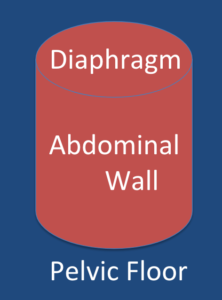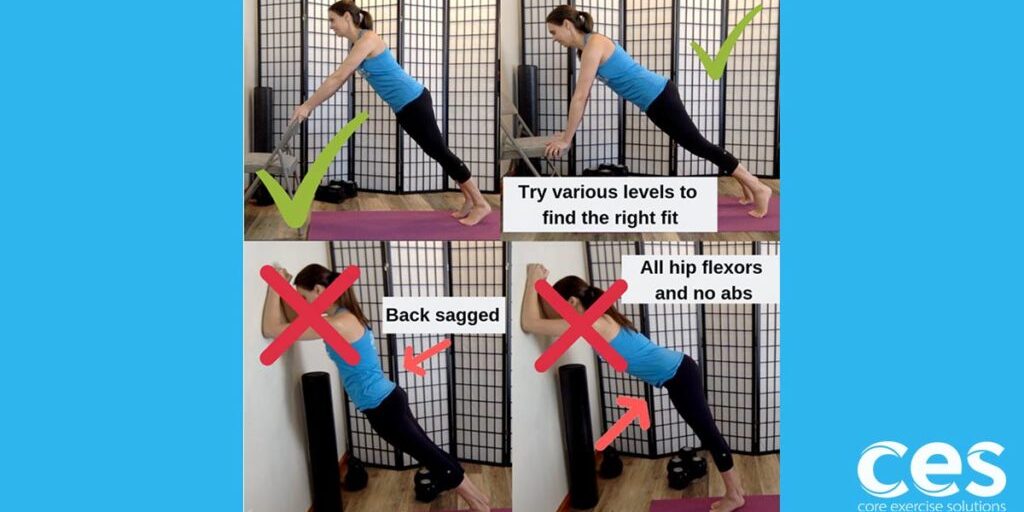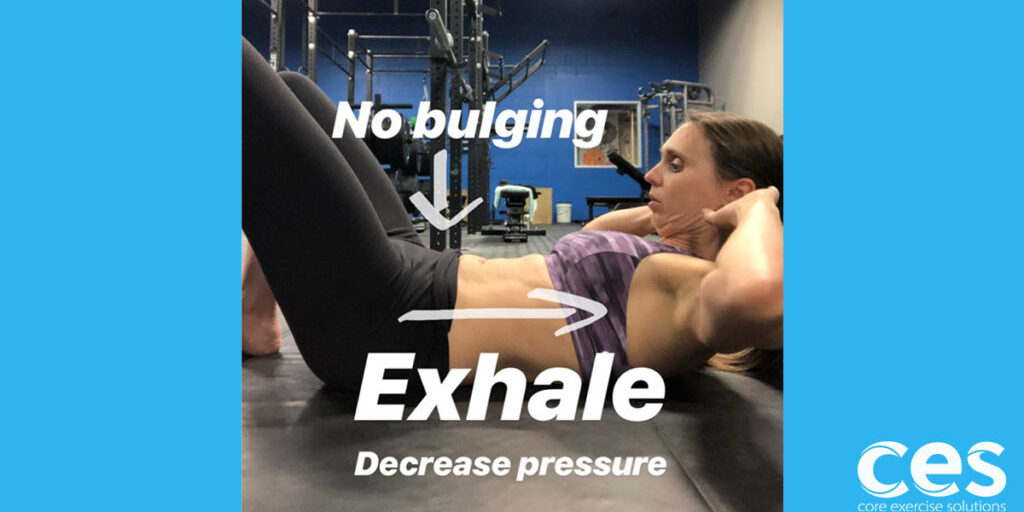What is core pressure and why is it important?
You hear the term “core pressure” thrown around a lot in the core and pelvic floor recovery world. The reason why is it’s key for complete recovery of both the core and pelvic floor. You must learn how to manage pressure in your core, but what does that actually mean??
Core pressure is the amount of intra-abdominal pressure needed to keep your spine safe and healthy. Too little pressure and you’re likely to suffer back pain when you lift something heavy. Too much and you’re likely to suffer from pelvic organ prolapse, hernias or bulging diastasis.

This becomes a Goldilocks situation where the amount of pressure has to be perfect.
I do not agree with decreasing all pressure. Sure, this can help a bit with prolapse recovery in the beginning, but what happens when you want to lift a heavy kid or move around the furniture in the living room? You can’t because you never learned how to regulate the pressure only how to decrease it. We need pressure to keep our spine safe in life.
Regulating pressure is harder to coach than just decreasing pressure, which is why you end up with the guidelines of not lifting with prolapse. Do you want to avoid a movement over the long haul or do you want to figure out how to train for it?
What’s the first step for regulating core pressure?
Learn how to breathe. If you’re deep breathing, you’re most likely regulating pressure. A good deep inhale sends pressure down to your pelvic floor, along with back, belly, and side rib expansion.
The simplest advice is to never hold your breath when you lift something. Always exhale. That’s great advice, but let’s break it down a bit further. Also, it’s very possible to hold your breath and lift safely- just saying!! A correct valsalva is different from bearing down. That, like everything else, just needs to be trained.1
When you hold even the smallest amount of tension in your pelvic floor during relaxed breathing, this prevents the pelvic floor from expanding with the inhale.2 Essentially shutting down a major part of the pressure regulation system. You need pelvic floor expansion on the inhale.
I see this all the time with prolapse recovery. In trying to protect the pelvic floor by holding it up, you effectively shut down the natural movement of the pelvic floor making it weaker over time. Without natural movement and function, you can’t get prolapse recovery or stop leaks because you get weaker over time. So, when you really need that strength to lift, it's not there, just tightness.
This is our abdominal pressure canister. We must have movement and coordination from the top, middle and bottom to adequately manage pressure.

How do we disrupt this perfect pressure system without knowing it?
#1. Holding in your abs all day.
Drawing in your belly button effectively shuts down the system. Since the pelvic floor works with the deep abdominals, most people that draw in their belly button also hold tension in their pelvic floor. This perpetuates both pelvic floor issues and diastasis. I'm not saying don't brace during hard exercise. I'm simply saying don't brace when you don't need to.
#2. Bearing down.
This is the opposite of drawing in and usually happens when we try to do tasks that are slightly beyond our strength level. You have to learn how to correctly load the pelvic floor and core at this level. This is where the overhead lifting with prolapse recommendation comes in. A lot of women will bear down when they lift overhead because this is how we cheat and create max strength to make the movement happen.
To prevent the bearing down from happening, you have to teach exhaling from the bottom up. The thing is, you can’t exhale from the bottom up if you never get a good inhale down. We must first lengthen to contract. Through this progressive system, you can effectively teach any movement you want.
I like to overload the core and pelvic floor with balloons as a progression step for women that want to get back to cardio or lifting heavy (that includes heavy kids). This is equivalent to a really hard exhale for the diaphragm and pelvic floor, just like when you’re lifting something heavy. It’s a great way to teach core pressure control.
Side note: If you have prolapse and try to blow up a balloon before you learn how to breathe and regulate your core, you can make the prolapse worse. Blowing up balloons is not something to be taken lightly.
Let's analyze blowing up a balloon with incorrect and correct core and pelvic floor pressure. The photos below are of a woman that was in the diastasis and pelvic floor program. The pink shirt pictures were taken about a month after the white shirt picture. You can see a huge difference in her core.
Here is a starting shot with resting posture. It's important to note the resting posture so you can tell the difference with bearing down. When someone is bearing down, their lower abs will bulge.

In this shot below, you can see she is over gripping with her upper abdominals and putting pressure down on her pelvic floor. This is causing her lower abs to bulge. You can also see the visible tension in her low back because she didn't get back body expansion on the inhale. Her inhale (not shown here) was all belly and in the photos with the pink shirt, she got a great 360 breathing pattern. You can see the lack of back tension in these.

In this shot below, she does an amazing job of emptying from the bottom up. Look at the definition in her lower abs and the lack of bulging. She has mastered deep breathing and core pressure regulation. The heavy feeling in her pelvic floor is completely gone and her diastasis has healed.

If we take away all core pressure and essentially never tighten our abs, how do we protect the spine during hard movement? We can't!
I'm not a fan of being told I can't do hard movement. Not only do I relish a physical challenge without having to think about my pelvic floor, but I never know when my heavy almost 6-year-old will want to hang from the top bar at the playground and need help getting up there.
Lifting heavy overhead in standing can be done safely with prolapse. It just needs to be trained and the first step of that is learning how to not bear down and how to regulate pressure in the core.

- Baessler K, Metz M, and Junginger B. Valsalva versus straining: There is a distinct difference in resulting bladder neck and puborectalis muscle position. Neurourology and Urodynamics. 2017. Jan 31.
- Hankyu Park, Dongwook Han. The effect of the correlation between the contraction of the pelvic floor muscles and diaphragmatic motion during breathing. J Phys Ther Sci. 2015 Jul; 27(7): 2113–2115.
Free Pelvic Floor Educational Series
Dr. Sarah Duvall, PT, DPT, CPT and the CES Team have helped thousands of women create the strength and stability needed to overcome common and not-so-common pelvic floor issues.
Join us today for this 4-part Pelvic Floor Video Series, absolutely free.
We don't spam or give your information to any third parties. View our Terms of Use and Privacy Policy.
Having trouble signing up? Click here











